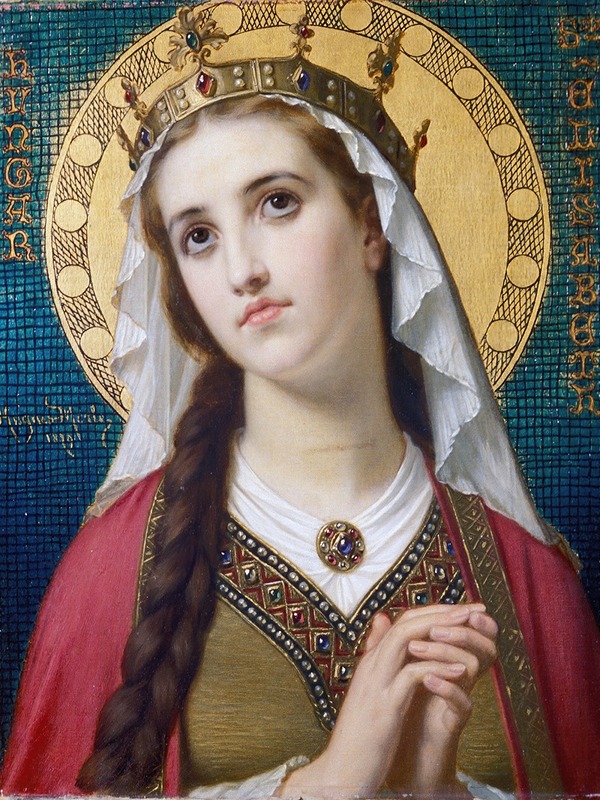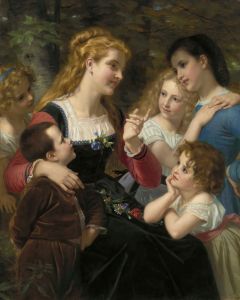
Saint Elizabeth Of Hungary
A hand-painted replica of Hugues Merle’s masterpiece Saint Elizabeth Of Hungary, meticulously crafted by professional artists to capture the true essence of the original. Each piece is created with museum-quality canvas and rare mineral pigments, carefully painted by experienced artists with delicate brushstrokes and rich, layered colors to perfectly recreate the texture of the original artwork. Unlike machine-printed reproductions, this hand-painted version brings the painting to life, infused with the artist’s emotions and skill in every stroke. Whether for personal collection or home decoration, it instantly elevates the artistic atmosphere of any space.
Hugues Merle's painting Saint Elizabeth of Hungary is a 19th-century artwork that depicts Saint Elizabeth of Hungary, a revered Catholic saint known for her charity and piety. Hugues Merle (1823–1881) was a French academic painter associated with the Realist movement, often compared to his contemporary William-Adolphe Bouguereau for his sentimental and detailed portrayals of women and children.
The painting portrays Saint Elizabeth of Hungary, who lived from 1207 to 1231 and was canonized in 1235. She was a princess of the Kingdom of Hungary and later became the Duchess of Thuringia through her marriage to Ludwig IV. Elizabeth is celebrated for her devotion to the poor and her acts of charity, which included distributing food and caring for the sick. Her life and deeds have inspired numerous works of art, literature, and religious devotion.
In Merle's depiction, Saint Elizabeth is often shown in a moment of compassion or charity, consistent with her historical legacy. While the exact details of this specific painting's composition are not widely documented, Merle's works typically emphasize emotional expression and fine detail, aligning with the academic art traditions of his time. His paintings often focused on themes of virtue, familial bonds, and moral narratives, which would align with the subject of Saint Elizabeth.
The painting reflects the 19th-century European interest in historical and religious subjects, as well as the Romantic and Realist movements' focus on human emotion and moral storytelling. Merle's works were well-received during his lifetime, and he exhibited regularly at the Paris Salon, where he gained recognition for his skillful technique and emotive compositions.
As of now, specific details about the provenance, current location, or dimensions of Saint Elizabeth of Hungary by Hugues Merle are not readily available in public records. However, the painting remains an example of Merle's dedication to portraying virtuous and emotionally resonant subjects, contributing to his reputation as a significant figure in 19th-century French academic art.

















